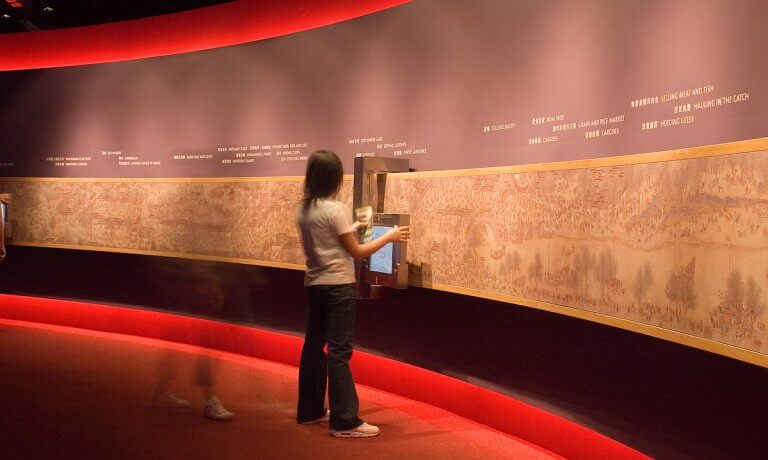
I have been an Interpretive Planner for museums around the world for over 30 years. When I started in 1992, the term was rarely used. Family and friends still ask: “What is it exactly that you do?” So I thought I would look back over my 30 years in museums, zoos, aquaria and heritage sites to pick out some of the favourite exhibits that I have worked on as a way of explaining the process of interpretive planning and what it is. Here we look at the Qingming Scroll exhibit in the Hong Kong Wetland Park.
The Agriculture, Fisheries & Conservation Department (AFCD) of the Hong Kong SAR Government worked with us to create a wetland park in the Northwest New Territories of Hong Kong. The Hong Kong Wetland Park was to be a buffer zone between the sensitive wetlands of Mai Po and the new town of Tin Shui Wai, a major tourist attraction and a local educational resource, aiming to raise awareness of, and helping to preserve one of the most important and threatened habitats on earth.
There were three major galleries in the visitor centre: World Wetlands (including a walkthrough aquarium exhibit containing real false gharials), Human Cultures (looking at our enduring artistic and cultural relationship with wetlands) and Wetland Challenge (where visitors took the role of an investigative journalist to learn about contemporary issues affecting wetlands). Of all the hundreds of exhibition we created for the Hong Kong Wetland Park, I think my favourite is our animation of the Qingming Scroll in the Human Cultures gallery.
We wanted to convey the importance of river systems and wetlands in Chinese culture and I was reminded of the magical depiction of life along an entire river system during the Qingming festival that I had seen at the Palace Museum in Taipei during my time studying in Taiwan. ‘Along the River during the Qingming Festival’ is a panoramic painting generally attributed to the Song dynasty artist Zhang Zeduan (張擇端, 1085–1145). It captures the daily life of people from the Song period at the capital, Bianjing, today’s Kaifeng in Henan, showing many aspects of celebration, both solemn and Rabelasian. The entire piece was painted in the handscroll format and the content reveals the lifestyle of all levels of society from rich to poor as well as different economic activities in rural areas and the city, as well as offering glimpses of period clothing and architecture. It has been revered and court artists of subsequent dynasties have made many re-interpretive replicas.
This is an exhibit that today would no doubt be easy to create using Augmented Reality, but back in the early 2000s when we were designing it we had to come up with a moving mechanism that would allow visitors to pass a screen over the scroll graphic and bring elements of it to life, from people talking to donkeys moving through the streets. It was a bit clunky compared to what we can do today but an elegant solution for the time.
Exhibit design by MET Studio Design Ltd
